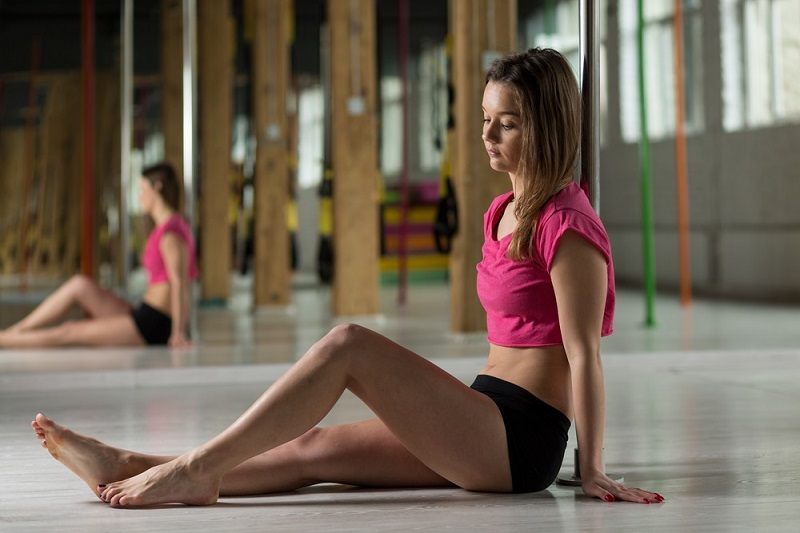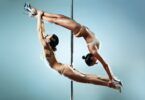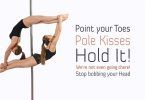Pole Dancing has gained popularity in recent years, but like any physical activity, it comes with the risk of injuries. In this article, we will explore the common injuries in Pole Dancing and provide valuable tips for injury prevention and safety.
Understanding the Risks
Pole Dancing is an exhilarating and physically demanding activity that involves intricate movements and intense strength requirements. Understanding the risks associated with this art form is crucial for practicing it safely. By being aware of the potential hazards, you can take appropriate precautions to minimize the likelihood of injuries.
Pole Dancing requires:
- Aerobic and aerial skillfulness
- The flexibility of the joints
- Elasticity in the soft parts of the body (muscles, tendons, ligaments, etc.) especially of the lower limbs and the torso, while the requirements of the exercises are extremely intense.
This kind of exercise is usually prolonged, mostly in the upper limbs and the torso. At this point, the muscles must fully coordinate and immediately respond in any case.
The athlete, on his behalf, must be fully concentrated and have a full understanding of his body position concerning the pole and the ground. He should perceive external stimuli such as gravity and the direction of the pole. All these must be taken into consideration by the trainee because he is not used to them in his everyday life
Common Injuries in Pole Dancing
While Pole Dancing offers numerous benefits for physical fitness and self-expression, it is not without its share of common injuries. It’s important to recognize these injuries to address them effectively and prevent them from occurring in the first place. By understanding the common injuries in Pole Dancing, you can take steps to protect yourself and ensure a safe practice.
Bruising: The Most Common Pole Dancing Injury
One of the most common injuries in Pole Dancing is bruising, which is caused by friction and pressure between the skin and the pole. Bruises may appear as a result of learning new moves, practicing complex tricks, or repetitive contact with the pole. While bruising is generally not a cause for concern, it can be uncomfortable. Proper conditioning, technique, and gradually building up tolerance can help minimize bruising.
Overuse Injuries: Upper Limb Strain
Due to the nature of Pole Dancing, overuse injuries are common, particularly in the upper limbs. Continuous gripping, lifting, and supporting body weight on the pole can lead to strain and fatigue in the muscles and tendons of the arms and shoulders. It is important to maintain proper form, take regular breaks, and incorporate rest days into your training routine to prevent overuse injuries.
Muscle Spasms and Ruptures
Intense physical exertion and repetitive movements in Pole Dancing can sometimes result in muscle spasms or even muscle ruptures. These injuries are typically caused by sudden movements, improper technique, or inadequate warm-up. Strengthening and conditioning exercises, along with proper warm-up and cooldown routines, can help reduce the risk of muscle spasms and ruptures.
Other Pole Dancing Injuries to Watch Out For
In addition to bruising, overuse injuries, and muscle-related issues, other injuries can occur in Pole Dancing. These may include inflamed tendons of the rotator cuff, sprained wrist joints, carpal tunnel syndrome, and hamstring injuries. Understanding these potential injuries and their causes can guide you in taking preventive measures and seeking appropriate treatment when necessary.
Prevention and Safety Measures
To minimize the risk of injuries in Pole Dancing, it is essential to prioritize safety and take precautionary measures. Implementing the following prevention strategies can help you enjoy a safer and more rewarding practice:
Using Protective Layers and Safety Mats
Placing protective layers, such as safety mats, under the pole can provide cushioning and reduce the impact of falls or missteps. Investing in suitable equipment and ensuring a safe environment can help prevent serious injuries and provide peace of mind during your Pole Dancing sessions. Ensure your safety during pole dancing with our high-quality crash mats from Vertical Wise Shop. Use code ‘CRASH10’ for a 10% discount and enjoy peace of mind during your practice.

Exclusive Offer: Enjoy a 10% discount on crash mats for our valued readers. Use code ‘CRASH10’ at checkout to claim your savings. Click on the image to buy
Exercising Under Supervision
Practising Pole Dancing under the supervision of a qualified coach or an experienced dancer can significantly contribute to injury prevention. They can provide guidance on proper techniques, spotting, and correcting form, helping you perform movements safely and effectively. Master your pole dancing skills while staying safe with Open Dance Academy’s online classes. Learn proper techniques from experts and reduce the risk of injuries. Use code ‘verticalwise’ for a 10% discount here!
Consulting Professionals for Orthopedic Issues
If you have pre-existing orthopedic conditions or concerns, it is advisable to consult with a physiotherapist or orthopedic specialist before engaging in Pole Dancing. Their expertise can provide personalized advice, exercises, and strategies to address your specific needs and minimize the risk of aggravating existing conditions.
By incorporating these prevention and safety measures into your Pole Dancing practice, you can reduce the likelihood of injuries, enhance your performance, and fully enjoy the physical and artistic aspects of this captivating art form.
Remember, your safety and well-being should always be a priority. Take care of your body, listen to its signals, and seek professional guidance whenever necessary to ensure a fulfilling and injury-free Pole Dancing journey.
Epilogue
Taking the necessary precautions and being aware of the potential risks can significantly reduce the chances of Pole Dancing injuries. Remember, safety should always be a top priority to enjoy this captivating and dynamic form of dance without unnecessary harm. Check out our article “Injury Prevention in Pole Dancing: Essential Tips for a Safe Practice” to learn more about how you can protect yourself from injuries and ensure a safe and enjoyable pole dancing experience.








